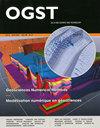多孔介质中的毛细现象:最新进展和挑战
IF 1.8
4区 工程技术
Q4 ENERGY & FUELS
Oil & Gas Science and Technology – Revue d’IFP Energies nouvelles
Pub Date : 2021-01-01
DOI:10.2516/ogst/2021059
引用次数: 1
摘要
毛细作用是指流体在毛细压力的作用下,由于表面能而进入细孔或多孔岩石、材料中的现象。毛细管压力使两相流体(如液体和蒸汽)之间形成可变形的界面。毛细现象及其重要性在土木工程、土壤科学、水文学、碳储存和石油工程等各个领域得到了广泛的认识。一个多世纪以前,经典的Young-Laplace方程和Lucas-Washburn方程为描述孔隙结构中毛细管驱动的流体流动奠定了基础。随着计算和实验技术的快速发展,对毛细现象的研究正以前所未有的水平向前推进,并为这一已经蓬勃发展的研究领域的进一步努力提供了见解和机会。本期特刊收集了关于多孔介质中毛细管作用的四篇论文,总结如下:在“Shale adhesion force measurements via atomic force microscopy”[1]这篇论文中,Mitiurev等人使用AFM (atomic force microscopy)技术在纳米尺度上测量了页岩悬臂梁与样品表面之间的粘附力。他们使用地形分析,SEM(扫描电子显微镜)和EDS(能量色散光谱)来精确定位样品表面上的测量点,并获得了石英颗粒包裹体的一致附着力测量值。在试验条件下,确定黏附力等于水-气毛细管压力。这些测量和结果有可能为更高精度的润湿性测量创造一条道路,从而更好地预测油藏规模,改善地下作业。在“致密/页岩储层最小混相压力的修正单元间模拟模型”一文中[2],Sun和Li提出了一种新的油气最小混相压力计算算法,在原有的单元间模拟模型中耦合毛管压力和约束作用,预测密闭空间内的油气最小混相压力。通过该算法,详细研究了温度、孔隙半径和注入气体杂质对限定油气最小混相压力计算的影响。研究发现,油气最小混相压力在密闭空间内降低,且降低程度与孔隙半径有关。对于所有测试的孔隙半径,约束最小混相压力随温度的升高先增大后减小。与纯二氧化碳注入相比,注入气体中加入甲烷增加了油气在受限纳米孔内的最小混相压力。为了实现更高效的注气设计,建议控制注气中甲烷的含量。Gao等人在“烃类气液体系的毛细性和相迁移性”一文中[3],采用x射线计算机微层析成像技术,在气泡点以下减压或注气时对孔隙层气液分布进行了三维成像。孔隙水平的气液分布可以直接获得气体的连通性,从而获得其流动性。采用基于晶格玻尔兹曼的流动模拟,直接从成像的气液分布计算各自(连通通道)的相对渗透率。当饱和度端点重新缩放到临界气饱和度时,气体相对渗透率遵循经典的非湿相排水相对渗透率曲线。液体相对渗透率与湿相吸胀和排水相对渗透率都是相容的。他们的研究为双组分系统的气体动力学提供了基本的见解,该系统低于气泡点压力,气体成核。Andersen在“毛细管末端效应稳态相对渗透率实验的解析建模与校正——改进的截距法、标度和一般毛细管数”一文中[4],介绍了多孔介质中的毛细管作用:最新进展与挑战。安徒生、邹双梅(特约编辑)本文章由计算机程序翻译,如有差异,请以英文原文为准。
Capillarity in porous media: Recent advances and challenges
Capillarity refers to the phenomenon of fluids imbibing into fine pores or porous rocks and materials due to surface energy, through the action of capillary pressure. The capillary pressure causes the deformable interfaces formed between two phase fluids in contact with each other, such as a liquid and a vapor. Capillarity and its importance have been widely recognized in various fields, including civil engineering, soil science, hydrology, carbon storage, and petroleum engineering. More than a century ago, the classical Young–Laplace equation and Lucas-Washburn equation laid the foundation for the description of the capillary-driven flow of fluids in porous structures. With the rapid development of computational and experimental techniques, the research on capillarity is advancing at an unprecedented level and provides insight and opportunities for further effort in what is already a flourishing field of research. Four papers on capillarity in porous media are collected in this special issue and are summarized in the following paragraphs: In the paper “Shale adhesion force measurements via atomic force microscopy” [1], Mitiurev et al. used the AFM (Atomic Force Microscopy) technique to measure the adhesion force between cantilever and sample surface at nanoscale for shale. They used topographical analysis, SEM (Scanning Electron Microscopy) and EDS (Energy Dispersive Spectroscopy) to accurately locate the measurement points on a sample surface and obtained consistent adhesion force measurements for quartz grain inclusions. The adhesion forces were determined to equal the water– air capillary pressure under the test conditions. These measurements and results have potential to create a path towards much higher accuracy–wettability measurements and consequently better reservoir-scale predictions and improved underground operations. In the paper “A modified cell-to-cell simulation model to determine the minimum miscibility pressure in tight/shale formations” [2], Sun and Li developed a new oil-gas minimum miscibility pressure calculation algorithm, which couples the effects of capillary pressure and confinement in the original cell-to-cell simulation model to predict the oil-gas minimum miscibility pressure in a confined space. By the algorithm, the effects of temperature, pore radius, and injection gas impurity on the confined oil gas minimum miscibility pressure calculations are studied in detail. They found that the oil gas minimum miscibility pressure is reduced in confined space and the degree of this reduction depends on the pore radius. For all the tested pore radii, the confined minimum miscibility pressure first increases and then decreases with an increasing temperature. Compared to pure carbon dioxide injection, the addition of methane in the injection gas increases the oil gas minimum miscibility pressure in confined nanopores. It is recommended to control the content of methane in the injection gas in order to achieve a more efficient gas injection design. In the paper “Capillarity and phase-mobility of a hydrocarbon gas–liquid system” [3], Gao et al. applied X-ray computed microtomography to image the pore level gas and liquid distribution in 3D while lowering the pressure below the bubble point or while injecting gas. The pore level gas and liquid distribution gives direct access to the connectivity of the gas and hence its mobility. Respective (connected pathway) relative permeability is directly computed from the imaged gas and liquid distribution using lattice Boltzmann-based flow simulation. The gas relative permeability follows a classical non-wetting phase drainage relative permeability curve when re-scaling the saturation endpoint to the critical gas saturation. The liquid relative permeability is compatible with both a wetting phase imbibition and drainage relative permeability. Their study provides fundamental insight into the gas dynamics in two-component systems that fall below the bubble point pressure and gas is nucleated. In the paper “Analytical modeling and correction of steady state relative permeability experiments with capillary end effects – An improved intercept method, scaling and general capillary numbers” [4], Andersen presented Capillarity in Porous Media: Recent Advances and Challenges Jianchao Cai, Pål Ø. Andersen, Shuangmei Zou (Guest editors)
求助全文
通过发布文献求助,成功后即可免费获取论文全文。
去求助
来源期刊
CiteScore
2.70
自引率
0.00%
发文量
0
审稿时长
2.7 months
期刊介绍:
OGST - Revue d''IFP Energies nouvelles is a journal concerning all disciplines and fields relevant to exploration, production, refining, petrochemicals, and the use and economics of petroleum, natural gas, and other sources of energy, in particular alternative energies with in view of the energy transition.
OGST - Revue d''IFP Energies nouvelles has an Editorial Committee made up of 15 leading European personalities from universities and from industry, and is indexed in the major international bibliographical databases.
The journal publishes review articles, in English or in French, and topical issues, giving an overview of the contributions of complementary disciplines in tackling contemporary problems. Each article includes a detailed abstract in English. However, a French translation of the summaries can be provided to readers on request. Summaries of all papers published in the revue from 1974 can be consulted on this site. Over 1 000 papers that have been published since 1997 are freely available in full text form (as pdf files). Currently, over 10 000 downloads are recorded per month.
Researchers in the above fields are invited to submit an article. Rigorous selection of the articles is ensured by a review process that involves IFPEN and external experts as well as the members of the editorial committee. It is preferable to submit the articles in English, either as independent papers or in association with one of the upcoming topical issues.

 求助内容:
求助内容: 应助结果提醒方式:
应助结果提醒方式:


